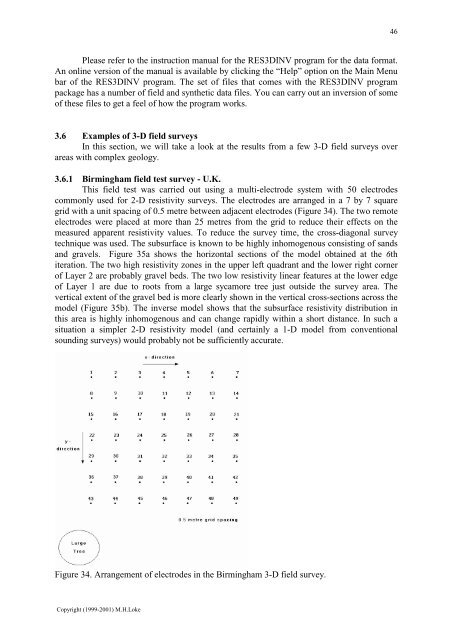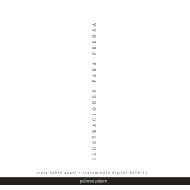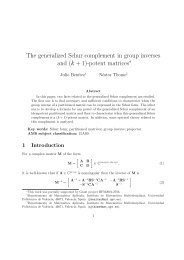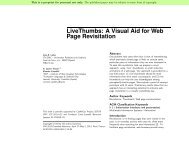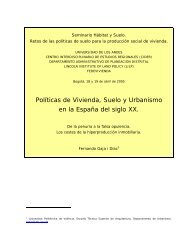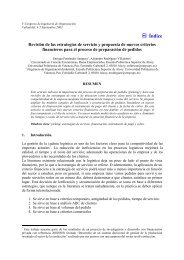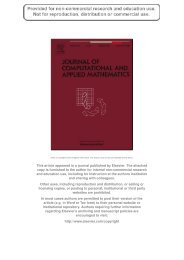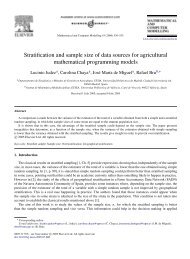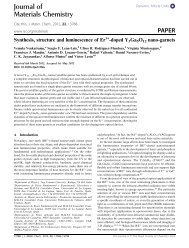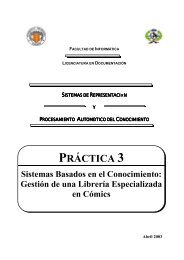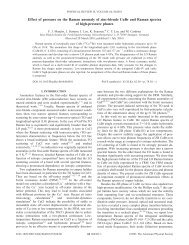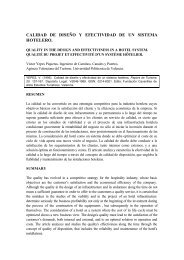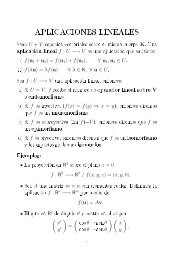Introduction to the resistivity surveying method. The resistivity of ...
Introduction to the resistivity surveying method. The resistivity of ...
Introduction to the resistivity surveying method. The resistivity of ...
Create successful ePaper yourself
Turn your PDF publications into a flip-book with our unique Google optimized e-Paper software.
46<br />
Please refer <strong>to</strong> <strong>the</strong> instruction manual for <strong>the</strong> RES3DINV program for <strong>the</strong> data format.<br />
An online version <strong>of</strong> <strong>the</strong> manual is available by clicking <strong>the</strong> “Help” option on <strong>the</strong> Main Menu<br />
bar <strong>of</strong> <strong>the</strong> RES3DINV program. <strong>The</strong> set <strong>of</strong> files that comes with <strong>the</strong> RES3DINV program<br />
package has a number <strong>of</strong> field and syn<strong>the</strong>tic data files. You can carry out an inversion <strong>of</strong> some<br />
<strong>of</strong> <strong>the</strong>se files <strong>to</strong> get a feel <strong>of</strong> how <strong>the</strong> program works.<br />
3.6 Examples <strong>of</strong> 3-D field surveys<br />
In this section, we will take a look at <strong>the</strong> results from a few 3-D field surveys over<br />
areas with complex geology.<br />
3.6.1 Birmingham field test survey - U.K.<br />
This field test was carried out using a multi-electrode system with 50 electrodes<br />
commonly used for 2-D <strong>resistivity</strong> surveys. <strong>The</strong> electrodes are arranged in a 7 by 7 square<br />
grid with a unit spacing <strong>of</strong> 0.5 metre between adjacent electrodes (Figure 34). <strong>The</strong> two remote<br />
electrodes were placed at more than 25 metres from <strong>the</strong> grid <strong>to</strong> reduce <strong>the</strong>ir effects on <strong>the</strong><br />
measured apparent <strong>resistivity</strong> values. To reduce <strong>the</strong> survey time, <strong>the</strong> cross-diagonal survey<br />
technique was used. <strong>The</strong> subsurface is known <strong>to</strong> be highly inhomogenous consisting <strong>of</strong> sands<br />
and gravels. Figure 35a shows <strong>the</strong> horizontal sections <strong>of</strong> <strong>the</strong> model obtained at <strong>the</strong> 6th<br />
iteration. <strong>The</strong> two high <strong>resistivity</strong> zones in <strong>the</strong> upper left quadrant and <strong>the</strong> lower right corner<br />
<strong>of</strong> Layer 2 are probably gravel beds. <strong>The</strong> two low <strong>resistivity</strong> linear features at <strong>the</strong> lower edge<br />
<strong>of</strong> Layer 1 are due <strong>to</strong> roots from a large sycamore tree just outside <strong>the</strong> survey area. <strong>The</strong><br />
vertical extent <strong>of</strong> <strong>the</strong> gravel bed is more clearly shown in <strong>the</strong> vertical cross-sections across <strong>the</strong><br />
model (Figure 35b). <strong>The</strong> inverse model shows that <strong>the</strong> subsurface <strong>resistivity</strong> distribution in<br />
this area is highly inhomogenous and can change rapidly within a short distance. In such a<br />
situation a simpler 2-D <strong>resistivity</strong> model (and certainly a 1-D model from conventional<br />
sounding surveys) would probably not be sufficiently accurate.<br />
Figure 34. Arrangement <strong>of</strong> electrodes in <strong>the</strong> Birmingham 3-D field survey.<br />
Copyright (1999-2001) M.H.Loke


